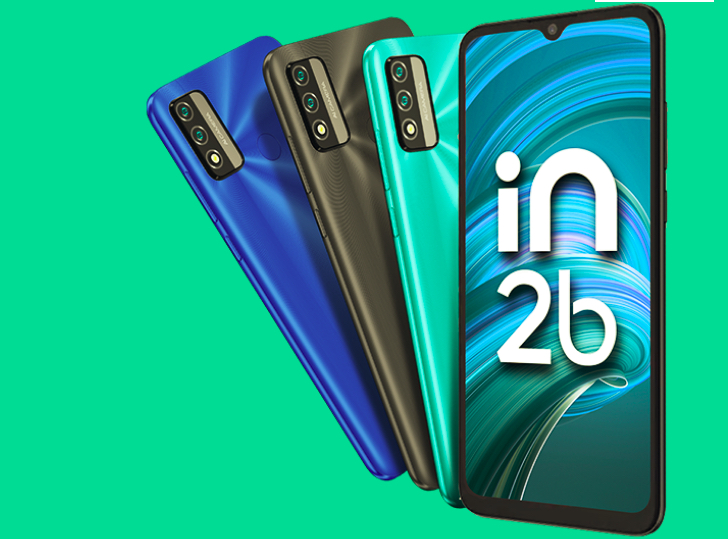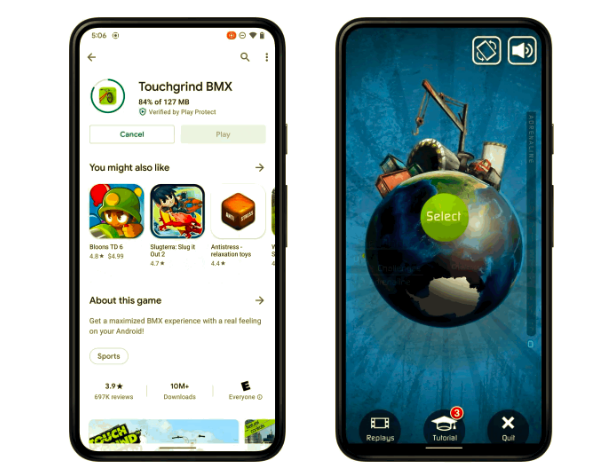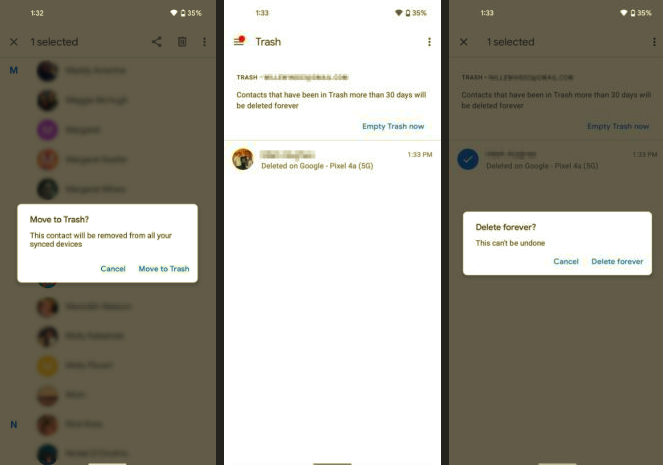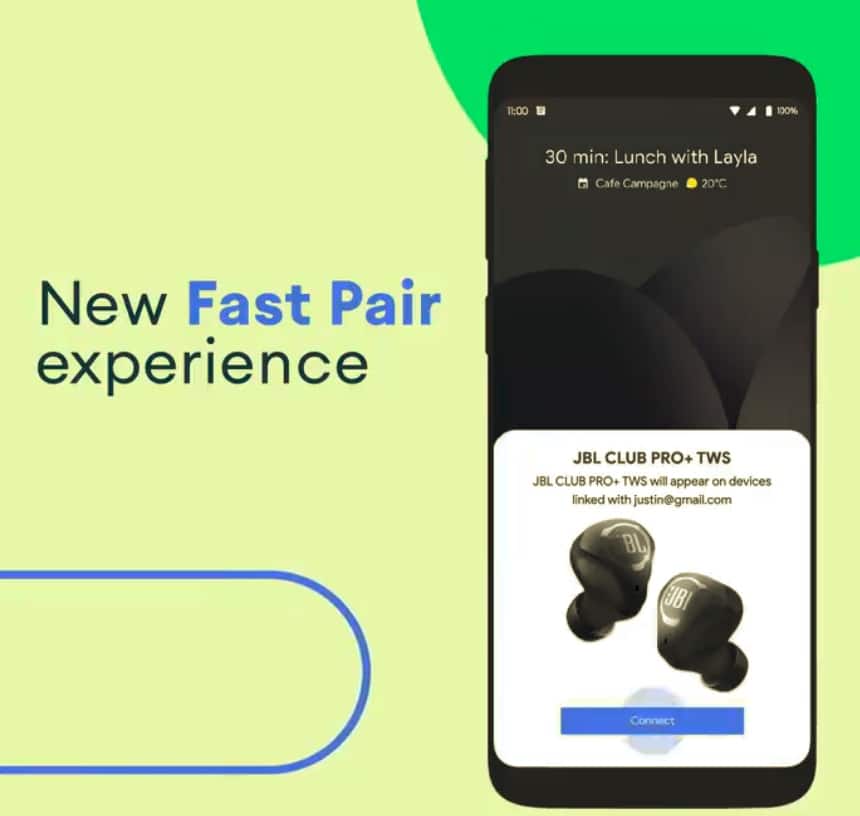You’ve all heard the phrase ‘feature creep’ with regard to technology – another aspect you’ll have noticed first hand is ‘size creep’, with successive smartphones from each manufacturer getting gradually larger and larger. The G3 is a significant size bump from the G2 and is now right at the edge of what the average human hand find comfortable – or even possible. Yet it’s easy to forgive the extra girth when the whole package is taken as a whole – this is perhaps the most complete smartphone ever created.
You see, smartphones have traditionally always involved compromise – with feature A getting missed out because there wasn’t room, or because it conflicted with feature B. There always seemed to be something missing that necessitated wistful thinking and a sideways look at the next – or a competitor’s – model. Aside from Xenon flash in the camera (and that’s just wistful thinking from yours truly), there’s absolutely nothing serious missing in the G3, with a specification that looks to the future and with hardware that could be updated quite happily for several years with new OS versions. In other words, the G3 might well be ‘the’ smartphone you’ve been waiting for.

The LG G3, suitable for medium to large hands only!
Not that it’s perfect, of course. Almost by definition, that’s unattainable, not least because everyone wants something different from a smartphone. The very size here may be a sticking point to some, but at least no one can point to a feature that the G3 is lacking. And, surprisingly, it comes in at well under £500 (in the UK) undercutting all other recent flagships.

Yes, it’s a touch slab, but with a sharper screen than anything else in existence!
Around 8mm longer than 2013’s well respected G2 and 4mm wider, the size bump is significant, though as with most of these devices, you quickly get used to the new form factor and that becomes ‘normal’. The G3 is also, significantly, still 5mm shorter and 4mm narrower than Samsung’s Note 3 ‘phablet’, despite having a 5.5” display, thanks to thin bezels all round and good design by LG.

The ‘brushed metal’ back turns out to be plastic, but it turns out to be a decent materials choice overall….
As a result, the G3 never feels like a phablet in the hand, with nicely curved back fitting well in the hand. The materials used are 100% plastic, with the removable back shell glazed to look like aluminium – your fingers expect cold metal and they get soft and warm plastic, but then if metal really were used then the cost would be higher and RF transmission and reception that much more problematic.

With the back off, showing the removable 3000mAh battery and microSD slot….
Having the back be removable means that, happily, LG has at last copied Samsung’s USP of having a removable battery. I realise that some people are very happy with a ‘sealed’ design, but a year or two down the road, being able to buy and slot in a brand new cell may make all the difference to a family member. Or, if you’re a true road warrior, you can buy and swap in a spare charged cell on heavy days out.

The back cover has a Qi charging coil built-in – one less thing to worry about?
Battery flexibility is extended further by having Qi charging built into the G3 out of the box. So you can pop it down on your bedside or desk-side charger at any point and the G3 will always be topped up and ready to roll. Add in the 3000mAh capacity and you’ve got quite a capable power set-up.
In daily use, battery life is quite decent, with the Snapdagon 801 processor and 2GB of RAM working fairly efficiently, making up for the increased number of display pixels that the G3 has to drive. Around 80% more pixels than on a typical 1080p display, the device’s screen is a whopping 2560 by 1440 – yes, you heard that right. Labelled QHD, as in Quad 720p ‘HD’, the G3’s display is as crisp as you might imagine.

QHD display, with virtual controls…. and a prominent LG logo!
It’s absolutely true that 99% of users simply won’t be able to tell the difference between this and a 1080p panel in day to day use, but who cares, given that the G3 isn’t a premium price, is fabulously future proof and that the extra resolution is there to amaze when needed. LG ships a couple of rather over-processed 4K demonstration videos and the effect is indeed somewhat jaw dropping, with every trick in the book (including clever pseudo-3D!) being pulled to convince you that this is what everyone needs in their phone. In fact, finding accessible 4K content is still hard in 2014, but one has to presume that it’ll get easier and, as I say, the G3 is good for quite a few years yet.
So is the QHD screen a gimmick? No, that would be unfair. It’s a technical achievement and so what if most people won’t even notice the significance? I do, and now you do too….
Visibility outdoors could be better, but it’s no worse than other contemporary flagships like the iPhone 5S and Galaxy S5. One can only imagine that compromises that have to be met when creating displays of this complexity!

The rear physical buttons for volume and power…. (and yes, I’ve left the protective film on!)
Part of the G3’s secret in feeling smaller than it is, is the lack of any side or top control buttons. Power, volume up and down are all on the back, as on other recent LG designs, and you do get used to them there. Yes, I’d still rather have a little more distance between the easily smudged camera glass and the volume up key, but at least the latter is now recessed and the power button raised/domed, so it’s fairly easy for your fingers to find their way around, sight unseen.

The OIS-equipped 13MP camera, infrared focus eye and two-tone dual LED flash….
Imaging
Next to the camera glass is the dual LED flash, one each of two different hues, with software control over how intensely each gets fired in any particular low light situation, iPhone 5S-style. Opposite the flash is the much vaunted ‘laser’ focussing system, nothing more in fact than a traditional camera infrared beam aid, though very welcome compared to the typical phone camera ‘adjust the focus until you get maximum contrast’ hack. Focussing was very fast but not always entirely accurate – trying to focus on a delicate flower head, for example, often fails and you end up with something else in sharper focus (see example further below).

As you focus, HUD markers appear, depending on subject, I presume representing points for which the hardware thinks it has a valid focus lock. All well and good, though it’s hard to see these outdoors in bright light.
Results from the G3 camera are generally good, though it’s ultimately just a standard 13MP 1/3.2” sensor and with full auto mode it’s very easy to have highlights blown out in sunshine. And this is despite HDR being ‘on’ by default – I sometimes got better results by tapping ‘…’ and switching the interface to manual mode, in which you can (try to) focus more precisely by tapping part of a scene. OIS is included, though it’s 2-axis only – still, it helps with low light scenes, where the electronic shutter will be open for a while, etc. As you’ll see below, though, don’t expect miracles. I do get the feeling LG can improve low light shots with better processing, so hopefully this will arrive in a firmware update. See these photo samples and crops for an idea of quality in various light conditions and for various subjects.

‘Auto HDR’ed photo – the G3 camera at its absolute best!

1:1 crop from the previous photo….

Another superb shot, in the shade and up close, lovely detail and feel….

1:1 crop from the previous photo….

A decent stab at capturing the colours of this blossom, though tiny highlights are ‘blown out’…

1:1 crop from the previous photo….

Another example, with the auto-exposure making a mess of bright areas, here on the pet’s fur….

Macro shots don’t always come out well – trying to focus on something small, such as the stem head here, proved impossible….

Night shots come out fairly well, atmospheric, but if you look too closely then the noise and artefacts are typically bad from such a small sensor….

1:1 crop from the previous photo….
Holding down the shutter capture icon provides a very fast burst mode and, cleverly, the version of Android Gallery here keeps the burst shots in one ‘clump’, rather than taking up multiple slots in the thumbnail grid. A really neat innovation is when taking ‘selfies’ using the front-facing camera (FFC), with the option to use a full brightness lit rectangle on the display, around a reduced sized viewfinder – effectively the display becomes the LED flash for the FFC – and for traditional selfie scenes, the system works really well. Under half a metre is, after all, LED flash home turf.
Editor’s note: screenshots from the G3 can’t be easily shown here in ‘blog’ format, since down-scaling finely detailed QHD screenshots is a step too far! Still, you’ll get the idea of each feature, hopefully….

The use of the lit screen to provide light for the FFC is really innovative – and can work well.
Video capture’s excellent too, in terms of both picture and audio quality. The OIS helps significantly in keeping user hand shake out of the equation and there’s at least 2x lossless digital zoom in 1080p mode, through a pinch/splay gesture, though this transitions seamlessly into lossy digital zoom during capture so in real world use you’d almost certainly be in the latter area when zooming.
The audio side of things is excellent too, with good output via quality in-ear headphones and a speaker that’s loud and of reasonable fidelity, though the latter’s aperture on the smooth G3 back means that you can lose a lot of volume if you put the phone down on any flexible or sound-absorbing surface.

The speaker aperture, set into the brushed back…
Applications and UI
Overall performance is goodish, though I have to be absolutely honest here – the G3 was no faster than most of the other top Android phones I’ve tested. In fact, if anything screen transitions and pop-ups were slightly slower. Indicating, perhaps, that LG still has work to do in optimising the firmware for that huge QHD screen.

Customising LG’s skin over Android: setting the virtual control layout wanted, plus hiding applications that aren’t needed on a day to day basis….
There’s certainly plenty you can fiddle with, with some of the UI aids copied verbatim from Samsung (‘Dual Window’, ‘Smart screen’, arguably the Quick Circle flip cover – not reviewed, etc.) and others unique to LG, including a virtual keyboard whose height can be adjusted. This latter seems interesting, with the possibility of having more actual content on screen while entering text, though there’s a minimum height and this isn’t significantly smaller than the standard stock Android keyboard on most other phones – I’d have liked to have seen this idea extended further, for special uses, and also to have had the keyboard adjustable at any time and not just from deep in the bowels of settings. Plus, why oh why, LG, is ‘Auto-correct’ turned off by default?

Unusually, you can adjust the keyboard height (and turn off the number row), but this is the smallest it will go – more, please, LG!
LG’s skin over Android follows the general trend across the industry of being ever lighter and less intrusive – thank goodness. The notifications pane – a bloated nightmare on the G2, has been noticeably trimmed down and is now useable.

A much lighter touch on the notifications pane, with full customisation too!
LG has also rewritten some of the core Android applications, and for the better, with Calendar being an excellent example, with the home view being a grid of the current month, with entries partially shown in plain text, and all meaning that I didn’t need to fall back on my standard Android staple of the third party ‘Touch Calendar’.
The G3 is thankfully light on bloatware, with the only things to (probably) avoid being LG’s SmartWorld store (though even here there are some interesting G3 themes and fonts), McAfee Security (not needed, just be careful not to install apps outside the Play Store) and the ThinkFree office file viewer (also not needed, since Google now provides free Office editors for all (Docs, Sheets, Slides).

Browsing LG SmartWorld, never mind the apps, there’s plenty of customisation content!
Unique to the G3 is Knock Code, an extension of the double-tap-to-unlock system to also provide some security. Essentially you specify a sequence of screen quadrants to tap. Get the sequence wrong and the G3 remains locked. It’s a nice idea and well implemented, though of course the security is (just as for patterns and PINs, of course) possibly compromised by others seeing you tapping away and making a mental note of what you did.
Also unique, but not actually any use, is Smart Notice, a Google Now-wannabe widget that aims to suggest things you might want to do or know about. In my review period, most things it wanted to tell me about were LG promotional tips about the device, I think I’d be happy removing this from my main homescreen very quickly.

Smart Notice is underwhelming – often producing nothing interesting and often truncated. Reports are that it gets better with time, but I’m sceptical!
Verdict
The G3’s exact specifications vary according to market, with the review unit coming with 16GB internal storage (plus microSD, also accessible under the removable battery cover) and 2GB of RAM, though other markets (presumably those with more complicated/graphical character sets, all of which need representing on the QHD screen) get 32GB and 3GB of RAM. Not that I’m jealous….!

The microSD slot nestles above the battery….
The LG G3 ends up as a really high end all-rounder. Materials, specifications, components, innovations, all are top end, yet with a price that’s up to 20% lower than the level at which its competitors launched. Last year’s G2 is already down to £300 and mid range pricing and, while I can’t see the G3 getting this low because of the tech involved, the G3 should remain very good value regardless.
It’s not often that I come across a smartphone for which there’s nothing significant to complain about(!) – but the G3 fits that description, with the only possible serious objection being the size itself – last year’s G2 may still better suit the palms – and wallets – of those with smaller hands. Overall, the G3 sets the benchmark for other QHD-screened smartphones through 2014 and 2015.
Thanks to Clove for the loan of the review hardware here.



















